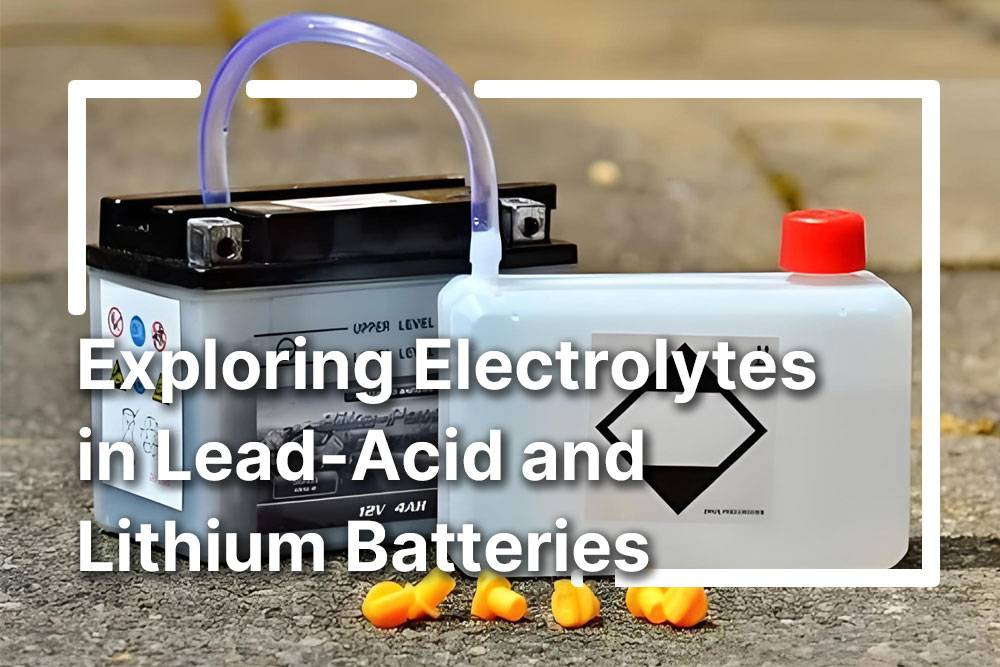Electrolyte batteries are a crucial component of many modern devices, from smartphones to electric vehicles. Understanding the role of electrolytes in these batteries is essential for grasping their functionality and significance in various industries.

Introduction to Electrolyte Batteries
Electrolyte batteries, also known as electrochemical cells, are devices that convert chemical energy into electrical energy through a redox reaction. They consist of two electrodes—an anode and a cathode—immersed in an electrolyte solution. When the battery is in use, ions move between the electrodes through the electrolyte, generating an electric current.
Understanding Electrolytes
What are Electrolytes?
Electrolytes are substances that conduct electricity when dissolved in a solvent, typically water. They are essential for the functioning of electrolyte batteries as they facilitate the movement of ions between the electrodes.
Types of Electrolytes Used in Batteries
There are several types of electrolytes used in batteries, including:
- Liquid Electrolytes: Commonly used in traditional batteries, liquid electrolytes are solutions of salts dissolved in solvents.
- Solid Electrolytes: Solid-state batteries employ solid electrolytes, which offer advantages such as improved safety and stability.
- Gel Electrolytes: Gel electrolytes have properties of both liquids and solids, offering a compromise between the two types.
Electrolyte Battery Chemistry
How Electrolytes Enable Battery Functionality
Electrolytes play a crucial role in battery chemistry by facilitating the movement of ions between the electrodes during charge and discharge cycles. They allow for the flow of electric current while maintaining the balance of charge within the battery.
Electrolyte Composition and Properties
The composition and properties of electrolytes vary depending on the type of battery and its intended application. Common electrolyte materials include lithium salts, polymers, and ceramic materials. Factors such as conductivity, stability, and compatibility with electrode materials are essential considerations in electrolyte design.
Applications of Electrolyte Batteries
Electrolyte batteries find widespread use in various industries due to their versatility and efficiency. Some common applications include:
Automotive Industry
Electric vehicles rely on electrolyte batteries for power storage, providing a clean and sustainable alternative to internal combustion engines.
Consumer Electronics
Smartphones, laptops, and other portable devices utilize electrolyte batteries for compact and lightweight energy storage.
Renewable Energy Storage
Electrolyte batteries play a crucial role in storing energy from renewable sources such as solar and wind power, enabling greater integration of these technologies into the grid.
Advantages and Disadvantages of Electrolyte Batteries
Advantages
- High energy density
- Rechargeable
- Long cycle life
- Fast charging capabilities
Disadvantages
- Limited capacity for high current discharge
- Environmental concerns associated with certain electrolyte materials
- Safety risks, particularly with liquid electrolytes
Future Developments in Electrolyte Battery Technology
Ongoing research and development efforts are focused on improving the performance and safety of electrolyte batteries. Innovations such as solid-state electrolytes and advanced electrode materials hold promise for enhancing energy storage capabilities and reducing environmental impact.
Conclusion
Electrolyte batteries are indispensable components of modern technology, powering everything from portable electronics to electric vehicles and renewable energy systems. Understanding the role of electrolytes in these batteries is essential for advancing energy storage technology and meeting the growing demands of a sustainable future.
Unique FAQs
- Are all electrolyte batteries rechargeable?
- No, while many electrolyte batteries are rechargeable, there are also non-rechargeable variants commonly used in disposable consumer electronics.
- What are the environmental impacts of electrolyte batteries?
- The environmental impact varies depending on the materials used in the electrolyte and electrode construction. Some electrolyte materials may pose recycling challenges or contain toxic components.
- How do solid-state electrolytes differ from liquid electrolytes?
- Solid-state electrolytes offer improved safety and stability compared to liquid electrolytes. They eliminate the risk of leakage and are less prone to thermal runaway reactions.
- What role do electrolytes play in battery overheating?
- Electrolytes can contribute to battery overheating if they undergo decomposition reactions at high temperatures, leading to the release of volatile gases or thermal runaway.
- Are there any emerging technologies that could replace electrolyte batteries?
- While there are ongoing research efforts into alternative battery chemistries, such as lithium-air and lithium-sulfur batteries, electrolyte batteries remain the most widely deployed energy storage solution due to their established performance and reliability.
